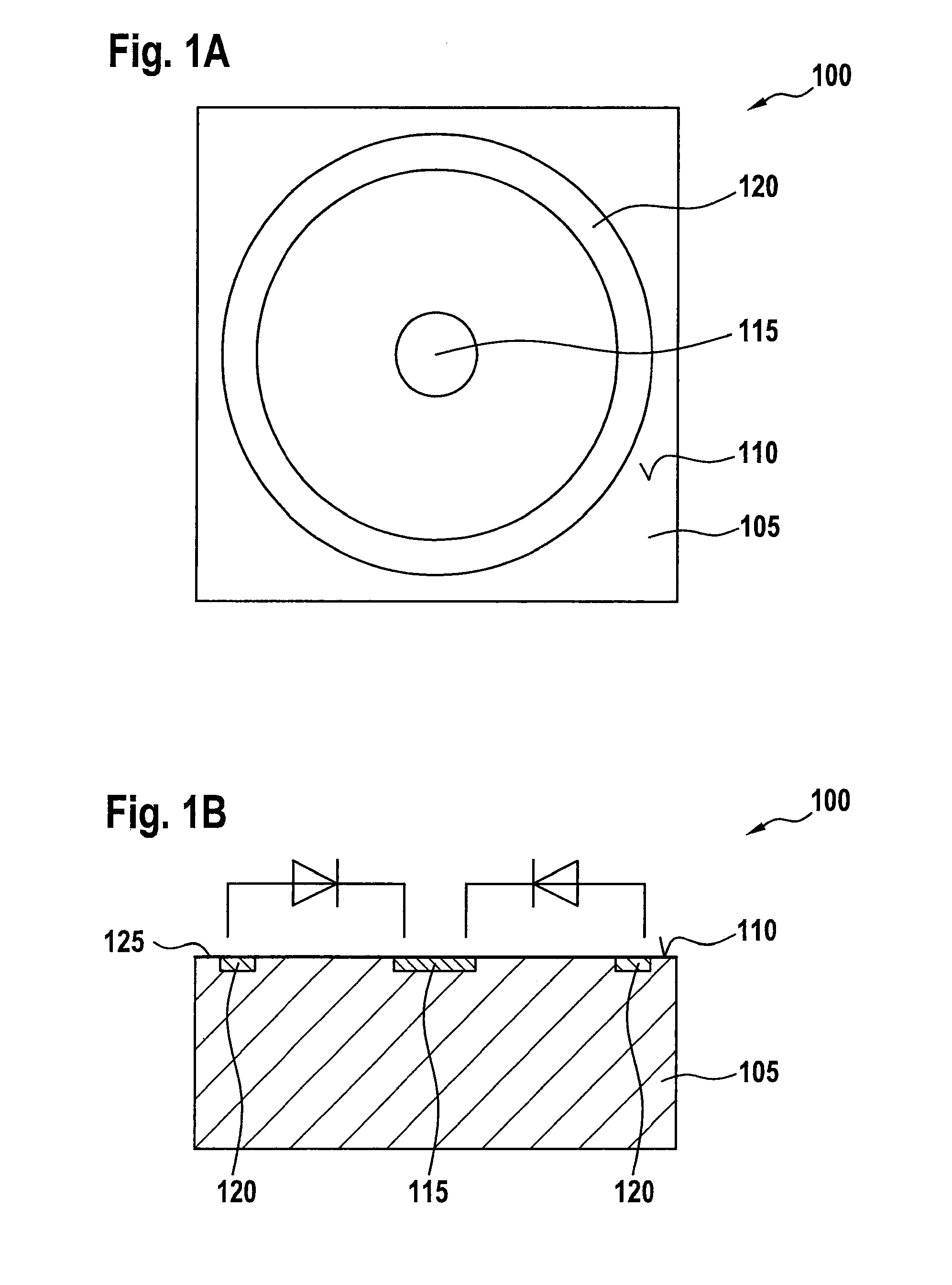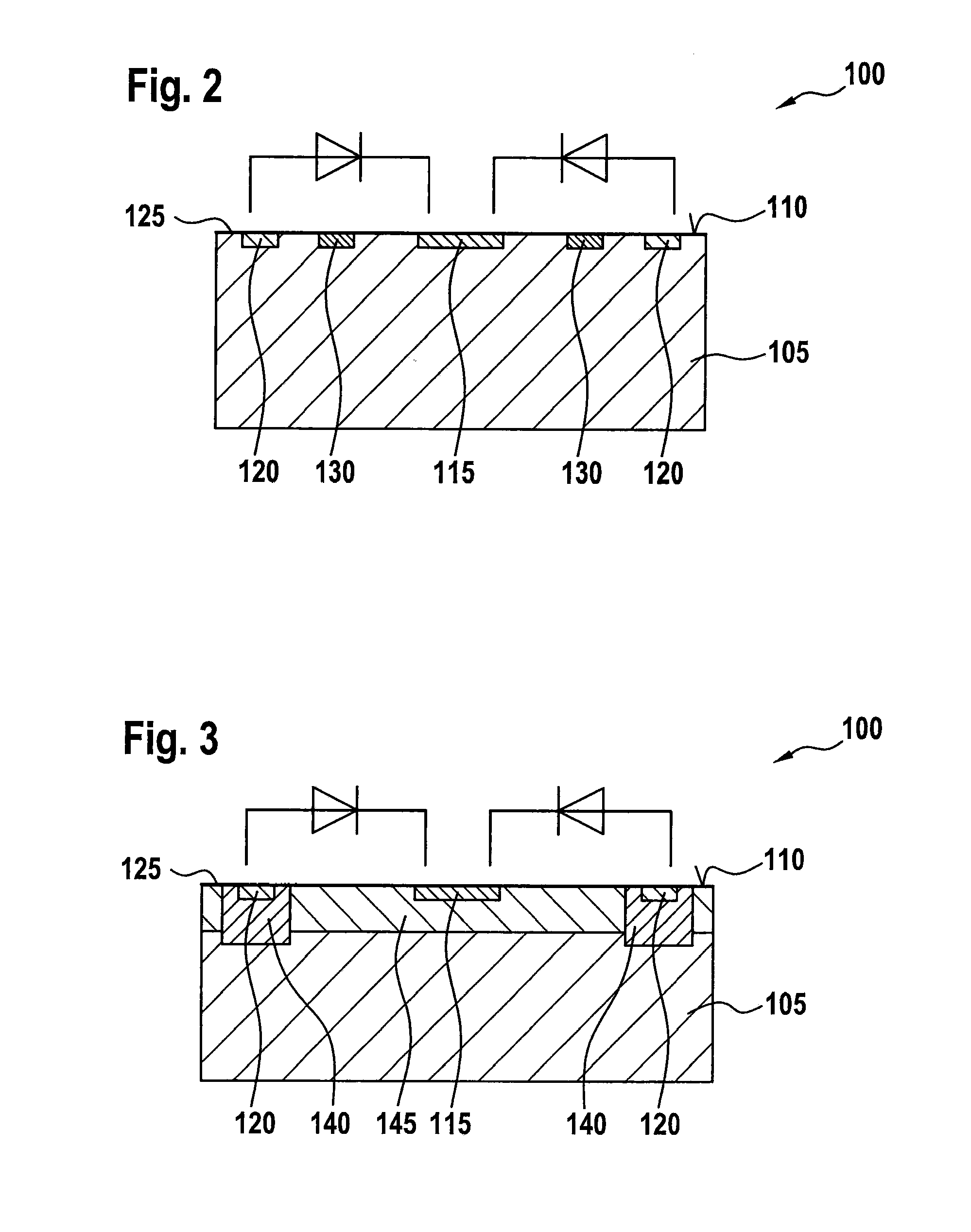Infrared photosensor
a photosensor and thermal imaging technology, applied in the direction of diodes, radiation control devices, semiconductor devices, etc., can solve the problems of thermal diode noise, thermal noise of the thermal diode, current noise, etc., to improve the absorption of infrared radiation, reduce the density of defects at the interface between the absorption layer and an adjacent layer, and facilitate the manufacturing process.
- Summary
- Abstract
- Description
- Claims
- Application Information
AI Technical Summary
Benefits of technology
Problems solved by technology
Method used
Image
Examples
Embodiment Construction
[0028]FIG. 1A shows a top view and FIG. 1B shows a lateral view of thermal diode 100. In the specific embodiment shown, a concentric, especially a circular concentric formation is selected. In other specific embodiments, other concentric or linear formations may also be used.
[0029]A substrate 105 of semiconductor material, e.g., silicon (Si), has a surface 110 on which a first doped structure 115 and a second doped structure 120 are disposed. In this context, structures 115 and 120 on surface 110 may be embedded into substrate 105, as illustrated in FIG. 1B. Structures 115 and 120 as well as the area of surface 110 of substrate 105 may be situated between them are covered uppermost with an absorption layer 125. For example, absorption layer 125 may be formed of silicon dioxide (SiO2).
[0030]Structures 115 and 120 are doped with different polarity; for instance, first structure 115 may be N-doped, while second structure 120 is P-doped. A reversed polarity is likewise possible. A diode...
PUM
 Login to View More
Login to View More Abstract
Description
Claims
Application Information
 Login to View More
Login to View More - R&D
- Intellectual Property
- Life Sciences
- Materials
- Tech Scout
- Unparalleled Data Quality
- Higher Quality Content
- 60% Fewer Hallucinations
Browse by: Latest US Patents, China's latest patents, Technical Efficacy Thesaurus, Application Domain, Technology Topic, Popular Technical Reports.
© 2025 PatSnap. All rights reserved.Legal|Privacy policy|Modern Slavery Act Transparency Statement|Sitemap|About US| Contact US: help@patsnap.com



